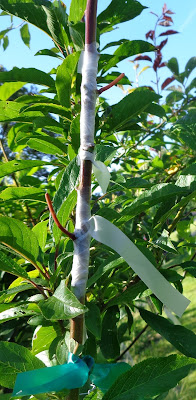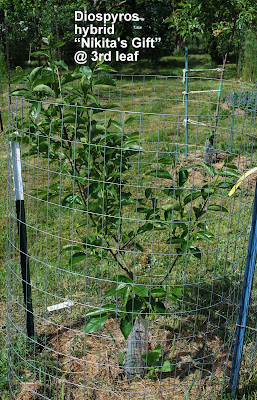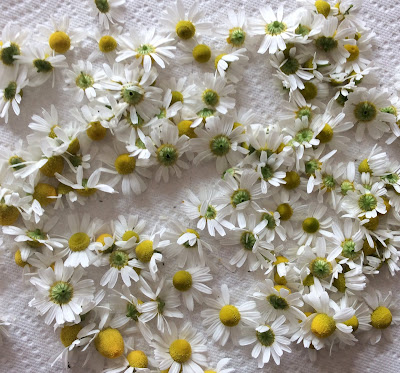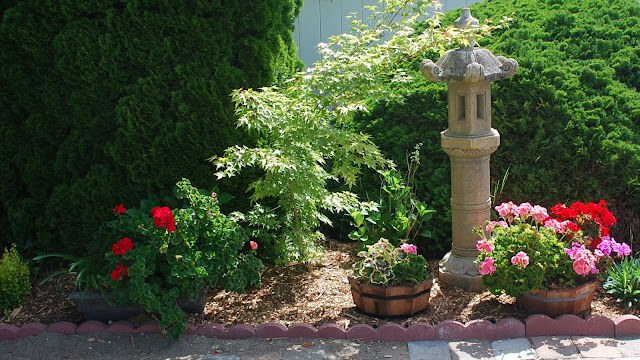 |
| Apricot T-buds onto plum. 6.5.15 |
Today seemed like a good day to T-bud. I had a day of vacation. Temp is 80 degrees F. The bark is slipping very nicely, on plums, apricots, and cherries.
Several of last year's June T-buds on plum, took and put out about 18 inches of growth before winter. The others all took, but remained dormant until Spring. All of those have been growing rapidly, good solid robust growth.
Cherries were another story. Only one Cherry T-bud took. Maybe they are just more difficult, and I'm still a novice. One observation, was that there was a lot of callous formation under the grafts. The callous seemed to push the grafts off the unions.
Last year I also grafted the cherries in mid July. This time is more than a month earlier.
Today, I T-budded some apricot onto the multi-graft plum. It's a long shot as to whether they ever bear, because apricot blooms too early and is frost killed. But if those couple of branches do that, it's OK. I also T-budded Methley onto the plum multigraft. The Methley is from my 4-year tree, which has not yet borne fruit. I thought about also adding Toka, but did not find good understock branches. I can wait and do them as whip and tongue grafts next Spring, if I still want to add them.
As for Cherries, I T-budded 3 each of Stella and Ranier onto Almaden Duke. Also 4 of Lapins, onto the same Almaden Duke. This time, I double-wrapped as I did this Spring's whip-tongue grafts, first with polyethylene tape, then with Parafilm. Then, to hold the cambium at the back of the bud, firmly against the stock, I overwrapped tightly, with a non-stretching nylon twine.
Now it's wait and see. From what I've read, the string will need to be cut at 3 weeks.
 |
| Ranier Cherry T-bud onto Almaden Duke Cherry. 6.5.15 |
|
These will need to be observed for the right time to unwrap, without letting the twine girdle the grafts. It's worth a try.
I copied the bud-wood illustration from last year's attempts.
 |
| Budwood Illustration from 7.15.14 |
























